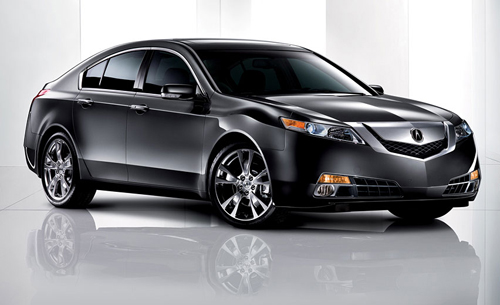2010 Acura RDX
For 2010, the Acura RDX has received a minor facelift. True, the changes are not Earth-shattering, but they do serve to keep the SUV contemporary. Along with the freshened front (which means the addition of the familiar Acura shield, aka "the beak") and rear fascias come some sharper tailpipes and a few new standard features. The RDX now includes Bluetooth (long overdue), automatic headlights, a USB input, compass and a backup camera with the display appearing in the rearview mirror. These items add to the RDX's overall ease of operation.
One of the biggest changes taking place in the auto industry is the shift away from V8 and V6 engines toward turbocharged and, occasionally, supercharged sixes and four-cylinders. This shift is being driven by the need to improve engine efficiency and reduce both fuel consumption and emissions without giving up on power. Acura was one of the first to embrace the turbocharged mantra when it launched the RDX as a 2007 model. Today, Ford has its EcoBoost lineup, Audi its TFSI range and Kia has the Sportage, soon to be released with a turbocharged four replacing the traditional V6.
The advantage to this strategy is simple. When driven as though there's an egg between the driver's foot and the gas pedal, a blown four delivers the same sort of fuel economy as its naturally aspirated counterpart. Pour on the coals, however, and the turbo spools up to deliver the performance of a six and then some. In many cases, the turbocharged four actually outdoes a similarly powered V6 because the torque turns up for work much earlier.
In the RDX's case, its turbo 2.3-litre four produces 240 horsepower and 260 pound-feet of torque, and it does so in an impressive manner. Power is delivered in a linear fashion, and it arrives without the engine getting flustered as it reaches for redline. The RDX puts 100 kilometres an hour on the clock in 7.8 seconds and turns the 80-to-120-km/h trick in a speedy 5.8 seconds. The advantage of the turbo was confirmed by my fuel economy test average of 11.1 litres per 100 km, which is better than many sixes offering similar performance. In fairness, I could have lowered the consumption appreciably had it not been so much fun winding up the turbo.
The five-speed manumatic transmission helps overall performance as the ratios keep the engine in its sweet spot for more of its working life. That stated, the RDX would put six speeds to much better use. Adding an extra gear and rejigging the ratio spacing would bring a faster launch off the line and easier highway cruising.







